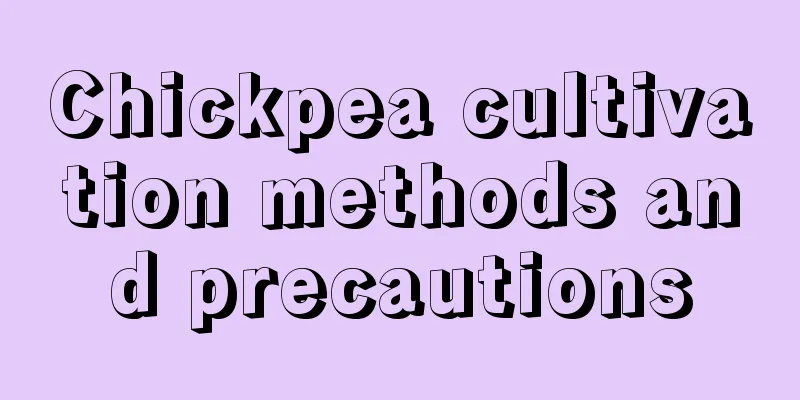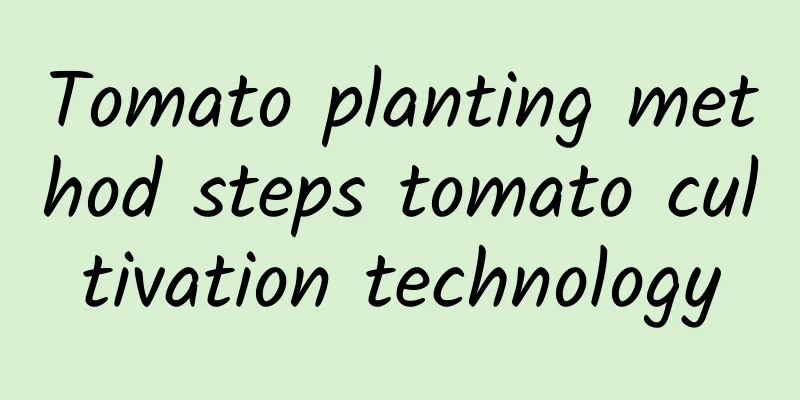Chickpea cultivation methods and precautions

1. Maintenance methods1. Soil: Chickpeas are not very demanding on soil quality. They only need well-drained, loose, and breathable soil. Generally, sandy loam can be used. 2. Water: Chickpeas are very drought-resistant, so you don’t need a lot of water when watering them. Just keep the soil slightly moist. Too much water or rainwater stored in the soil will cause poor plant growth. 3. Nutrients: Organic fertilizer is often used as fertilizer. Sprinkle the fertilizer on the soil and then turn it over to mix the soil and fertilizer evenly. This will allow the chickpeas to be better absorbed when planted. 4. Light: It is a plant that likes light. Long daylight can shorten its vegetative growth period, and short daylight does not prevent it from flowering. However, if it absorbs enough light, it can grow better. 2. Breeding techniques1. Pruning: After planting, the wilted and yellowed leaves should be properly pruned, and weeding and loosening of the soil should be done to better promote its absorption of nutrients. 2. Reproduction: Sowing is usually used for reproduction, and the time can be around mid-to-early April. The best time is to control the temperature at around 12 degrees Celsius. Select healthy seeds and place them in the soil, then cover them with a film. Small sprouts will emerge in about a week. 3. Problem diagnosis and treatment1. Dwarfing disease: A common disease in chickpea cultivation is dwarfing disease, which is not visible during the initial growth period but becomes obvious as the plant grows gradually. Prevention of this disease should be started after planting. You can choose to dilute carbendazim or mancozeb and spray it on the branches and leaves. 2. Cotton bollworm: A common insect pest is the cotton bollworm. This insect is very rampant and has a great impact on the growth of chickpeas. It needs to be diluted with thiosulfan and sprayed to kill it. IV. Other issues1. How to store: After picking the chickpeas, they should be dried and dehumidified first, then fumigated with aluminum phosphide, and then stored. When storing, it should be placed in a ventilated, dry and low temperature place to ensure that the chickpeas can be stored intact. 2. Is it edible? Chickpeas are edible. They can be said to be a kind of vegetable. Both the beans and the young leaves are edible. |
<<: Breeding methods and precautions of silver thorn
>>: Cultivation methods and precautions of tea oil
Recommend
Pothos and Money Tree…Now is the best time to repot, any later will not make it through autumn!
Change the pot of the green radish and it will gr...
Cultivation methods and precautions of Chlorophytum comosum
1. Soil When breeding, you need to use soil that ...
Pruning and flowering period control of Rhododendron yunjinensis
prune If you prune them properly, they will bloom...
When to plant ginkgo seeds
1. Sowing time Ginkgo seeds can be sown in spring...
How to propagate crabapple flowers with cuttings - time and method of propagating crabapple flowers with cuttings
Begonias are a plant of the Rosaceae family. In s...
How to grow fennel on the balcony
sowing Variety selection Choose seeds with strong...
How to propagate blue fescue
1. Planting This method is a relatively simple me...
Why can't you grow olives at home? Can you grow olive trees at home?
Olives can be planted at home. The leaves of oliv...
How many days after repotting can I fertilize my baby's breath? What should I do if the leaves turn yellow after repotting?
1. How many days can you apply fertilizer? After ...
How to cultivate Buddha beads Lover's Tears
1. Breeding conditions 1. Potting soil: The Buddh...
How to grow roots of desert rose
Desert Rose Life Features: Desert rose must have ...
What should I do if the lucky tree keeps losing leaves in spring?
1. See the Sun Reason: It is a plant that likes s...
How to make daffodils bloom more
1. Moisture When we buy the daffodils we need, we...
How to prune rose pomegranate
The significance of pruning This type of plant ha...
How often should I water my green radish? What should I pay attention to when watering?
How often should I water my green radish? During ...









